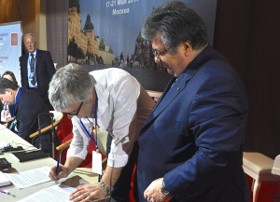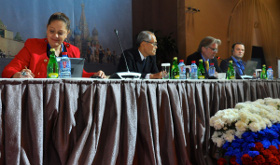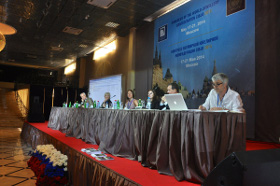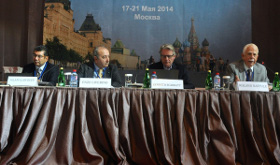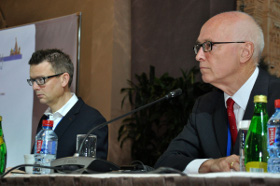CIBJO and Fairtrade International sign MOU aimed at promoting use of fair-trade gold in jewellery industry
CIBJO and Fairtrade International have signed a Memorandum of Understanding according to which Fairtrade commits to working with CIBJO and its member organisations to improving certified Fairtrade gold supplies to the jewellery markets and members of CIBJO-associated organisations, and CIBJO commits to facilitating and encouraging its members to adopt and integrate fairtrade gold and metals into their national supply chains.
The agreement was signed at the 2014 CIBJO Congress in Moscow by CIBJO President Gaetano Cavalieri and Fairtrade International’s fairtrade gold coordinator, Greg Valerio.
Fairtrade International is an organisation whose goal is to raise work and living standards in developing countries, and at the same time create sustainable economic opportunities. In the gold and precious metals sector it works with poorer and marginalised small-scale and artisanal miners with the aim of creating sustainable livelihoods through the creation of developmental standards, auditing of the chain of custody and certifying the finished product.
In working with artisanal mining sector, Fairtrade works to formalise small-scale mining;
eradicate mercury usage,thereby enhancing the state of the environment and public health; ensure that participants comply with internationally agreed-to conflict-free protocols; and eliminate both child labour and forced labour.
As part of the agreement, CIBJO and Fairtrade will work together to provide measurable developmental impacts for the small-scale and artisanal mining communities, and they will develop together educational programmes for the CIBJO membership and the greater jewellery industry, aimed at informing them about Fairtrade precious minerals and certification, and the contribution these are able to make in developing countries and regions.
Photo Caption: CIBJO President Gaetano Cavalieri (right) and Fairtrade’s Greg Valerio signing the MOU at the CIBJO Congress in Moscow.

